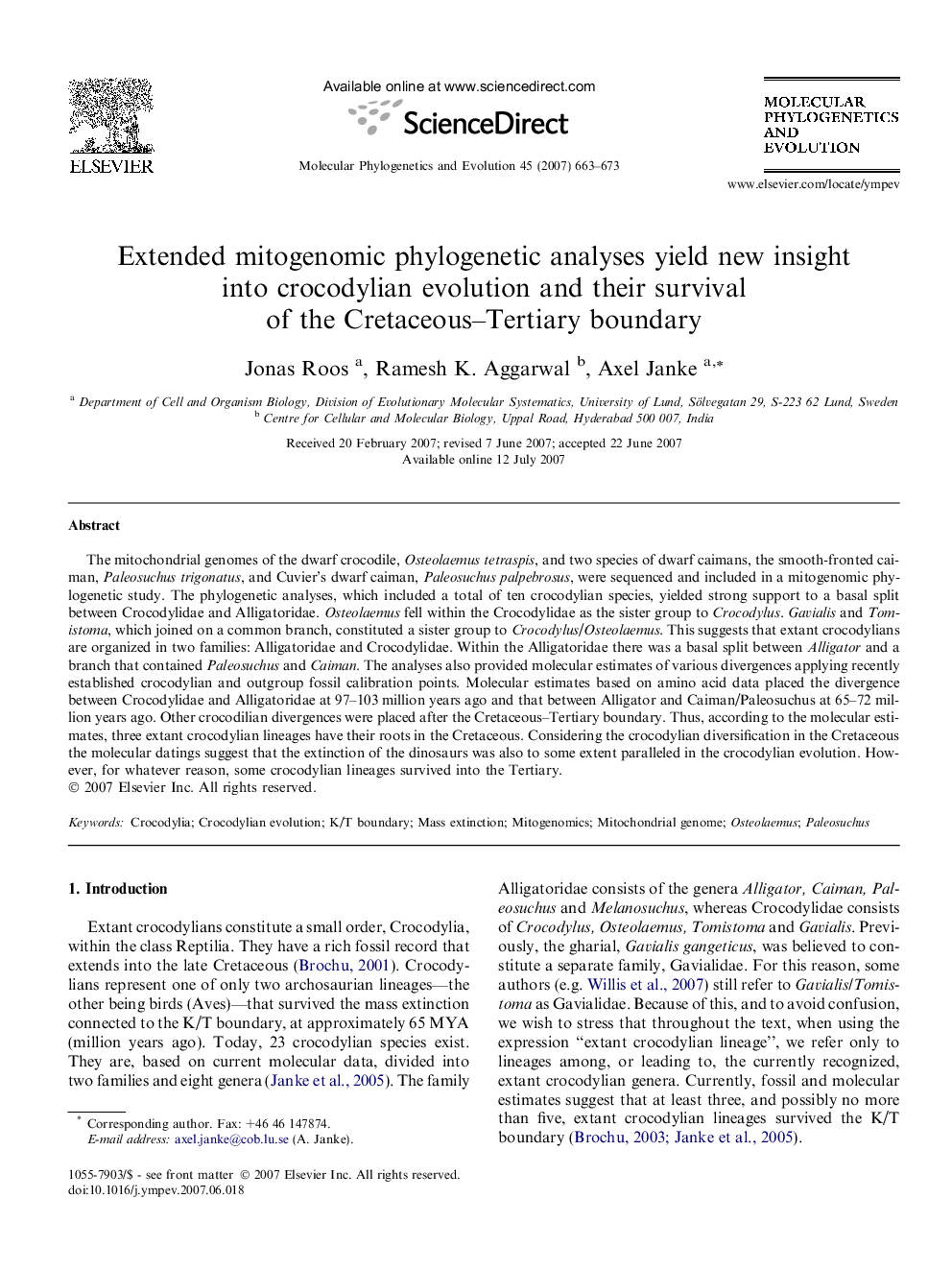| Article ID | Journal | Published Year | Pages | File Type |
|---|---|---|---|---|
| 2835499 | Molecular Phylogenetics and Evolution | 2007 | 11 Pages |
The mitochondrial genomes of the dwarf crocodile, Osteolaemus tetraspis, and two species of dwarf caimans, the smooth-fronted caiman, Paleosuchus trigonatus, and Cuvier’s dwarf caiman, Paleosuchus palpebrosus, were sequenced and included in a mitogenomic phylogenetic study. The phylogenetic analyses, which included a total of ten crocodylian species, yielded strong support to a basal split between Crocodylidae and Alligatoridae. Osteolaemus fell within the Crocodylidae as the sister group to Crocodylus. Gavialis and Tomistoma, which joined on a common branch, constituted a sister group to Crocodylus/Osteolaemus. This suggests that extant crocodylians are organized in two families: Alligatoridae and Crocodylidae. Within the Alligatoridae there was a basal split between Alligator and a branch that contained Paleosuchus and Caiman. The analyses also provided molecular estimates of various divergences applying recently established crocodylian and outgroup fossil calibration points. Molecular estimates based on amino acid data placed the divergence between Crocodylidae and Alligatoridae at 97–103 million years ago and that between Alligator and Caiman/Paleosuchus at 65–72 million years ago. Other crocodilian divergences were placed after the Cretaceous–Tertiary boundary. Thus, according to the molecular estimates, three extant crocodylian lineages have their roots in the Cretaceous. Considering the crocodylian diversification in the Cretaceous the molecular datings suggest that the extinction of the dinosaurs was also to some extent paralleled in the crocodylian evolution. However, for whatever reason, some crocodylian lineages survived into the Tertiary.
